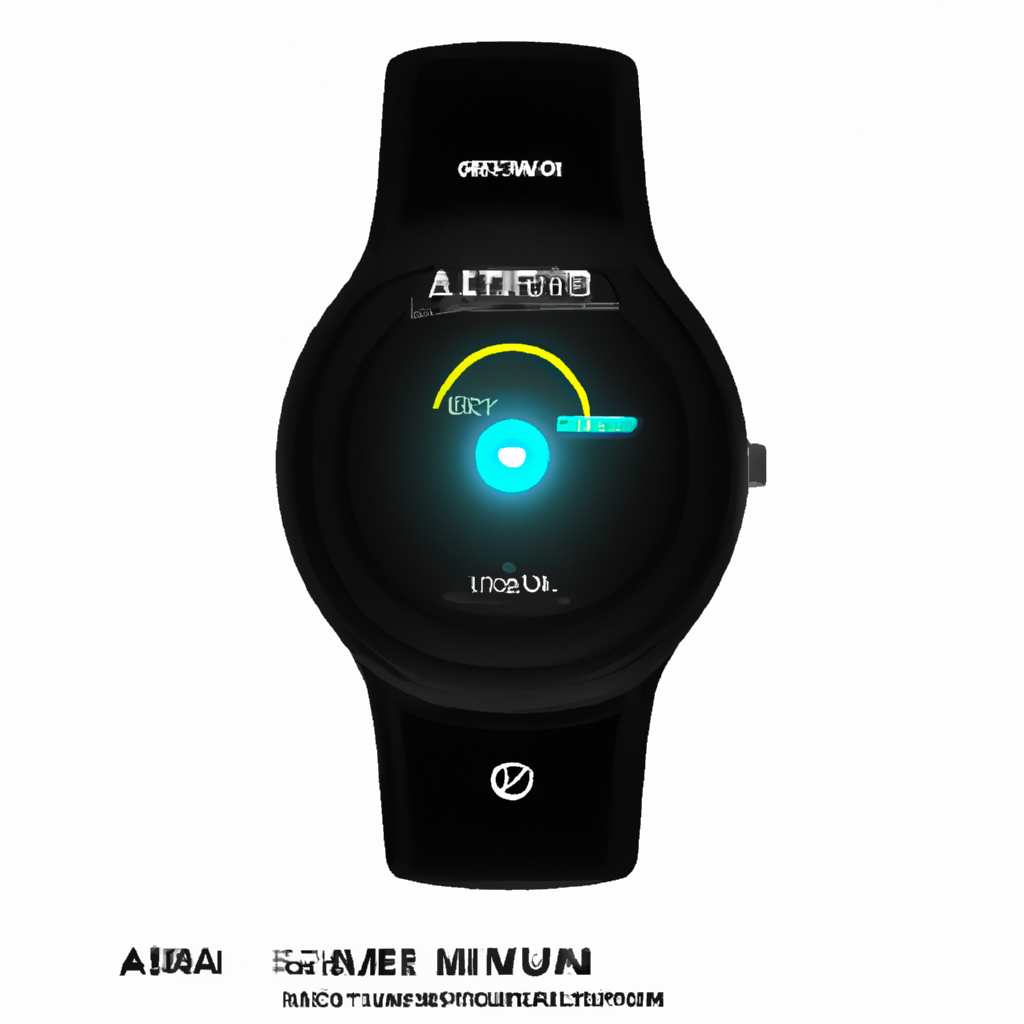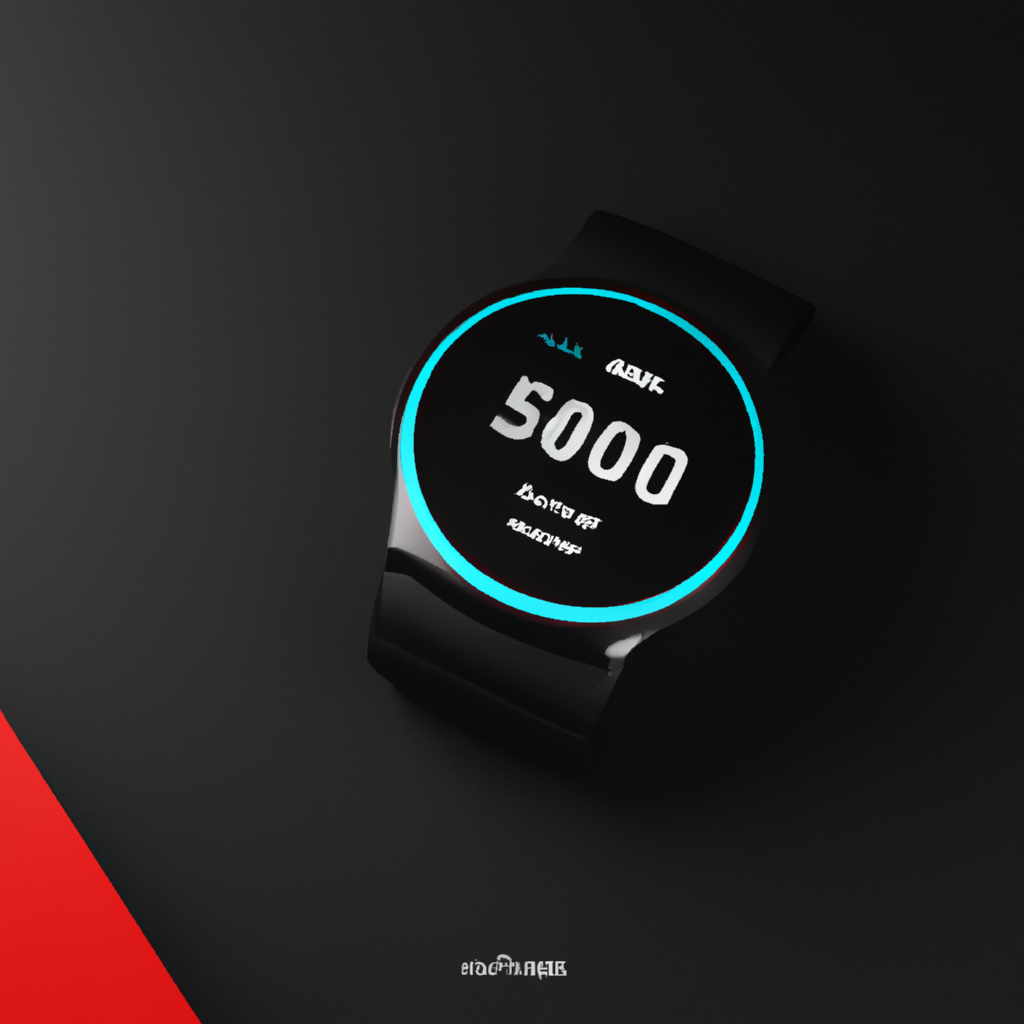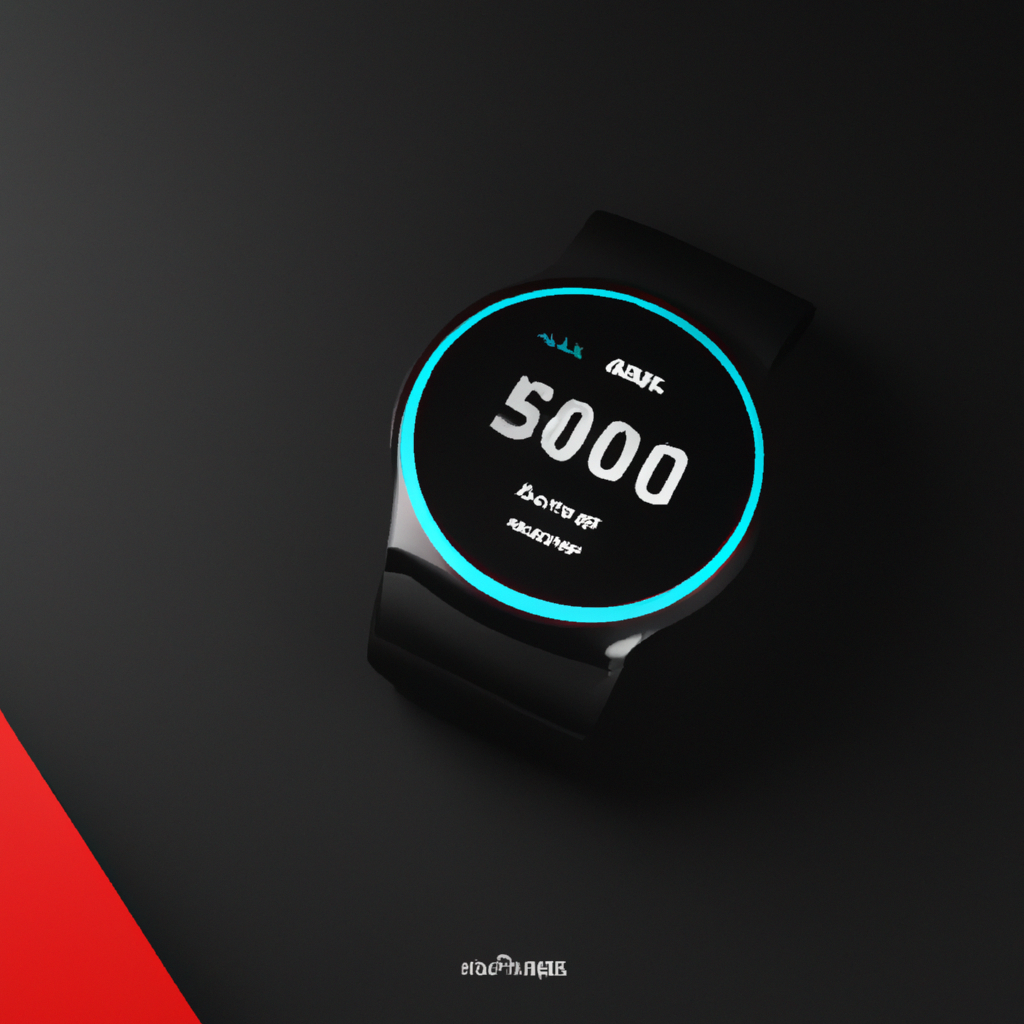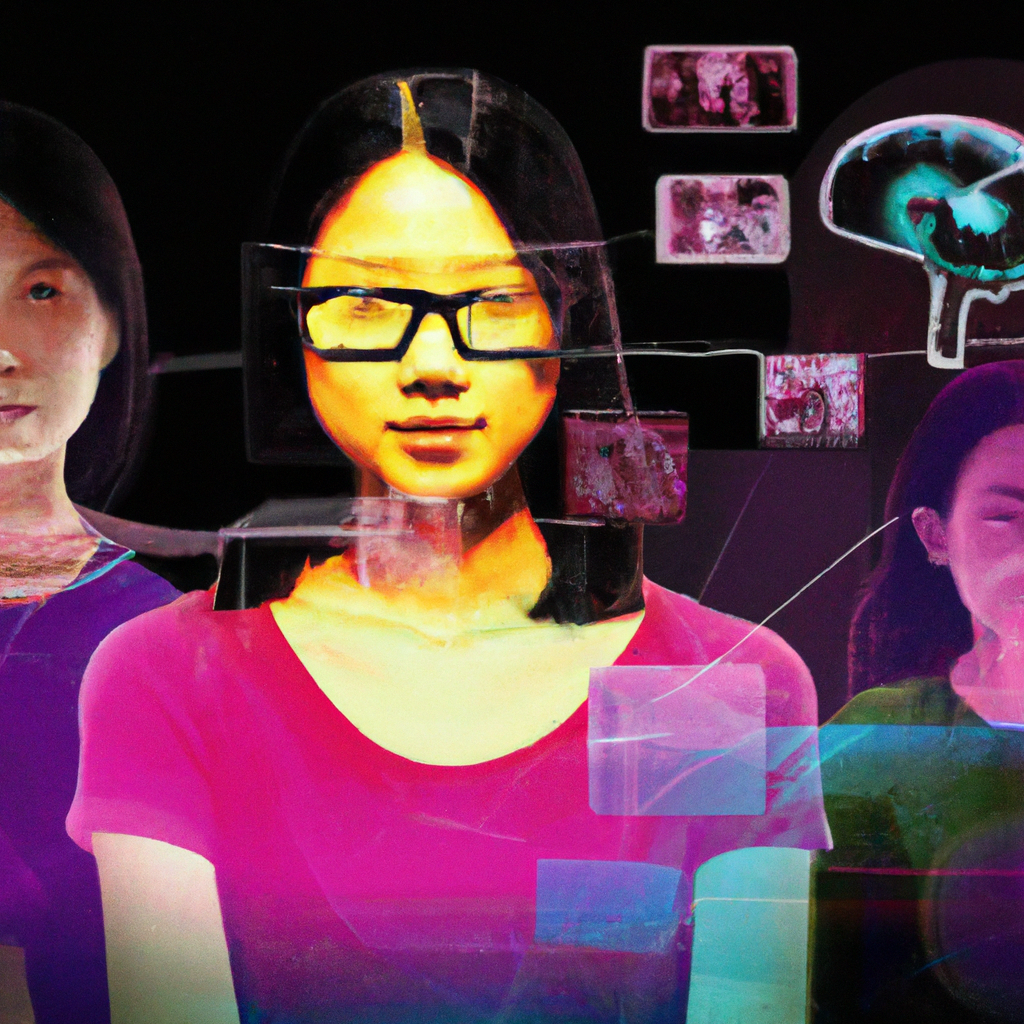Imagine a world where business professionals are equipped with artificial intelligence (AI) wearables that enhance their productivity, streamline their decision-making process, and revolutionize the way they work. This is no longer a far-fetched idea, as AI wearables have emerged as a game-changer in the workplace, promising to shape the future of business. With the ability to analyze data in real-time, provide personalized recommendations, and even predict outcomes, these innovative devices hold the potential to transform how we navigate the complexities of the corporate world. Whether it’s monitoring health metrics, optimizing workflows, or assisting with customer interactions, AI wearables are poised to become an invaluable tool in the arsenal of every forward-thinking professional.
The Emergence of AI Wearables
Understanding AI wearables
AI wearables are a type of technology that integrates artificial intelligence capabilities into wearable devices, such as smartwatches, smart glasses, and fitness trackers. These devices have the ability to collect, analyze, and interpret data, providing users with valuable insights and enhancing their daily activities. The integration of AI technology into wearables has revolutionized the way businesses operate, offering new opportunities for increased efficiency, improved communication, enhanced decision-making, and even employee training and safety.
Historical development of AI wearables
The development of AI wearables can be traced back to the early 2000s when the first wearable devices, primarily focused on basic functionalities like tracking steps and heart rate, entered the market. However, it was in the last decade that significant advancements in AI technology paved the way for the emergence of more intelligent wearables. With the advancements in machine learning algorithms and the increasing processing power of portable devices, wearables are now capable of performing complex tasks, such as natural language processing, image recognition, and predictive analytics.
Current applications of AI wearables
In today’s business landscape, AI wearables have found applications across various sectors and industries. One prominent use of AI wearables is in the field of healthcare, where devices equipped with AI technology can monitor vital signs, provide personalized recommendations, and even diagnose certain medical conditions. Additionally, AI wearables have made significant contributions to the field of employee productivity, allowing individuals to track their work habits, manage their schedules, and receive timely reminders. Furthermore, AI wearables are increasingly being utilized in industries that require hands-on work, such as manufacturing, construction, and logistics, to improve worker safety, provide real-time guidance, and reduce human errors.
AI Wearables in the Business Context
Understanding the growing use of AI wearables in business
The use of AI wearables in the business context has gained significant traction in recent years. These devices offer businesses a range of benefits, including improved operational efficiency, enhanced decision-making capabilities, and increased employee productivity. By leveraging AI wearables, organizations can gain real-time insights into various aspects of their operations, empowering them to make data-driven decisions and optimize their workflows.
Examples of businesses utilizing AI wearables
Numerous businesses have recognized the potential of AI wearables and are actively incorporating them into their operations. For instance, logistics companies have equipped their warehouse employees with smart glasses that provide real-time inventory updates, reducing the time spent searching for items and improving overall efficiency. In the healthcare industry, AI wearables have been used to remotely monitor patients’ health conditions, allowing healthcare professionals to provide timely interventions without the need for in-person visits. Even retail companies have harnessed the power of AI wearables by utilizing smart mirrors that recommend personalized clothing options based on customers’ preferences and body measurements.
Emerging trends in AI wearables for business
As AI technology continues to advance, new trends in AI wearables are emerging within the business realm. One notable trend is the integration of AI wearables with virtual and augmented reality (VR/AR) technologies. This convergence opens up possibilities for immersive training experiences, virtual meetings, and enhanced collaboration among team members located in different geographic locations. Additionally, there is a growing focus on the development of AI wearables that can seamlessly integrate with existing business systems, such as customer relationship management (CRM) software or enterprise resource planning (ERP) solutions. These integrations enable users to access relevant information and perform tasks directly from their wearables, further enhancing productivity and efficiency.

Increasing Efficiency with AI Wearables
How AI wearables streamline operations
AI wearables have proven to be valuable tools for streamlining operations within businesses. By automating repetitive tasks and providing real-time data, these devices can significantly reduce the time and effort required to complete various activities. For example, AI wearables equipped with voice recognition technology can transcribe conversations, eliminating the need for manual note-taking during meetings. Similarly, in industries such as manufacturing, AI wearables can provide workers with step-by-step instructions, reducing the learning curve and enabling them to perform tasks more efficiently.
Case studies of efficiency increase due to AI wearables
Several case studies demonstrate how AI wearables have led to tangible increases in operational efficiency. For instance, a logistics company implemented smartwatches for its delivery drivers, allowing them to receive real-time traffic updates and optimized routes, resulting in faster and more efficient deliveries. Another example is a construction firm that utilized augmented reality (AR) glasses to overlay digital blueprints onto physical spaces, enabling workers to visualize and accurately execute construction plans, thereby minimizing errors and saving time.
Predictive capabilities of AI wearables in businesses
One of the key advantages of AI wearables is their predictive capabilities, which allow businesses to anticipate future events and take proactive measures. By analyzing data gathered from wearables, AI algorithms can identify patterns, spot anomalies, and make predictions regarding equipment maintenance, inventory management, or even employee performance. For instance, a manufacturing company equipped its employees with sensors embedded in their helmets, which collected data on their movements and posture. By analyzing this data, the company was able to identify patterns that correlated with increased risks of workplace injuries, enabling them to implement targeted safety training and prevent accidents.
Impacts on Communication and Collaboration
AI wearables and team collaboration
AI wearables have the potential to transform team collaboration by enabling seamless communication and access to shared resources. For example, smart glasses equipped with video conferencing capabilities can facilitate virtual meetings, allowing team members in different locations to collaborate effectively. Additionally, AI wearables can provide instant access to shared documents, emails, and project management platforms, eliminating the need for constant reliance on laptops or mobile devices. This integration of AI wearables with collaboration tools can enhance teamwork, improve information sharing, and foster innovation within organizations.
Impact on internal and external communication
Effective communication is vital to the success of any business, and AI wearables can have a significant impact on both internal and external communication processes. Internally, AI wearables enable employees to communicate with each other seamlessly, regardless of their physical location. Whether it is through voice commands or text messages, wearables facilitate quick and efficient information exchange, thereby reducing response times and enhancing productivity. Externally, AI wearables can transform customer interactions by providing personalized recommendations, real-time product information, and even instant translation services, enabling businesses to better serve their customers and improve satisfaction levels.
The role of AI wearables in remote and flexible working
With the rise of remote and flexible working arrangements, AI wearables play a crucial role in ensuring effective communication and productivity. For remote workers, AI wearables enable them to stay connected to their teams and access important information, regardless of their physical location. Whether it is attending virtual meetings or receiving notifications and updates, these devices keep remote workers well-informed and engaged. Additionally, for flexible workers who are constantly on the move, AI wearables provide a convenient and hands-free way to communicate and access important resources, making it easier to work efficiently in different settings.

Improving Decision Making and Strategic Planning
AI wearables and data-driven decision making
In the era of big data, AI wearables offer businesses the opportunity to leverage the power of data for informed decision making. By collecting and analyzing relevant data points, wearables can provide valuable insights that aid in decision making processes. For example, wearables equipped with sensors can monitor employee stress levels, productivity patterns, and engagement levels, helping managers identify areas for improvement and make strategic decisions regarding resource allocation or training initiatives. Moreover, AI wearables can aggregate data from multiple sources, such as customer feedback, market trends, and internal performance metrics, enabling businesses to make data-driven decisions that align with their strategic goals.
Influence on business strategy and planning
AI wearables have the potential to influence business strategy and planning by providing real-time data and insights. With the ability to gather data on various aspects of operations, such as customer interactions, employee performance, and market trends, businesses can make more informed strategic decisions. For instance, a retail company using AI wearables to track customer preferences and behaviors can adjust its marketing strategies and product offerings accordingly, ensuring they remain competitive and relevant in the market. Additionally, wearables can assist in planning initiatives by offering predictive analytics that aid in forecasting demand, optimizing inventory levels, and identifying potential risks and opportunities.
Case studies: Companies that have improved decision making with AI wearables
Several companies have already experienced significant improvements in decision making by implementing AI wearables. For example, a large airline company leveraged AI-equipped headsets for their aircraft maintenance personnel, enabling them to access real-time information about the aircraft’s condition, previous maintenance history, and troubleshooting guides. This data-driven approach improved decision making by reducing delays, saving costs, and increasing safety. Similarly, a financial institution introduced AI wearables, such as smartwatches and fitness trackers, to their sales teams. The wearables provided real-time sales analytics and coaching, leading to better decision making during customer interactions and ultimately improving sales performance.
Transforming Employee Training and Development
Role of AI wearables in employee training
AI wearables have the potential to transform the way employee training and development programs are conducted. these devices can provide real-time guidance, personalized recommendations, and interactive learning experiences that enhance employee skills and knowledge. For example, a manufacturing company could use AI wearables to train new employees on complex assembly processes by overlaying digital instructions onto their vision, guiding them step-by-step through each task. This hands-on approach improves the training process by reducing errors, accelerating learning, and ensuring consistent quality across employees.
Impact on skill development and employee growth
AI wearables contribute significantly to the development of employees’ skills and promote continuous learning. By providing personalized recommendations and feedback based on real-time data, wearables help employees identify areas for improvement and suggest relevant training materials or courses. Additionally, wearables equipped with conversational AI capabilities can simulate real-life scenarios and provide instant feedback, enabling employees to practice and refine their skills. This continuous skill development leads to increased employee growth, job satisfaction, and overall organizational performance.
Examples of businesses transforming training with AI wearables
Numerous businesses have recognized the potential of AI wearables in transforming their training and development programs. For instance, a multinational technology company implemented VR-based AI wearables to train its customer support representatives. With wearables that can simulate customer interactions in virtual environments, representatives can practice their communication and problem-solving skills, ensuring they are well-prepared to handle real-life scenarios. Similarly, a healthcare organization utilized AI wearables to train surgeons on complex surgical procedures. The wearables displayed real-time feedback on their techniques and allowed them to practice critical steps in a risk-free environment, leading to improved surgical outcomes and patient safety.
AI Wearables and Workplace Safety
AI wearables for health and safety monitoring
One significant application of AI wearables in businesses is their ability to monitor employee health and safety. Wearables equipped with sensors can track vital signs, detect fatigue or stress levels, and send alerts in case of potential risks or emergencies. For example, construction workers wearing smart helmets with built-in sensors can be monitored for signs of fatigue or exposure to hazardous conditions, ensuring their safety and well-being. Furthermore, industries with high-risk activities, such as mining or oil and gas, can utilize wearable devices to monitor workers’ exposure to harmful substances or dangerous environments, mitigating potential accidents and health risks.
Case studies: Businesses improving safety with AI wearables
Several businesses have successfully improved safety levels by implementing AI wearables. For instance, a manufacturing plant implemented smart gloves equipped with sensors to detect abnormal temperatures, vibrations, or stress on workers’ hands. This enabled early detection of potential injuries and allowed for intervention and adjustments to prevent accidents. Additionally, a transportation company introduced AI wearables for its drivers, tracking fatigue levels, heart rate, and drowsiness. Real-time alerts were sent to the drivers, notifying them when they needed to take breaks or rest, with the aim of reducing the risk of accidents caused by driver fatigue.
Future possibilities for AI wearables and safety
The future potential for AI wearables in enhancing workplace safety is vast. With advancements in sensor technology and AI algorithms, wearables could become even more capable of identifying and mitigating safety risks. For example, wearables equipped with environmental sensors could monitor air quality or detect toxic gases, alerting employees and preventing exposure to harmful environments. Similarly, wearables that integrate with smart building systems could provide real-time evacuation guidance during emergencies, minimizing the risk of injuries. As AI wearables continue to evolve, their impact on workplace safety is expected to grow, leading to safer working environments and reduced accidents.
Privacy and Security Concerns
Risks associated with AI wearables
While the integration of AI technology into wearables brings numerous benefits, it also raises privacy and security concerns. The collection and analysis of personal data, such as health information or location data, present potential risks if not properly managed. Unauthorized access, data breaches, or misuse of personal information are some of the risks associated with AI wearables. Additionally, the constant monitoring and data collection capabilities of wearables could raise concerns regarding employee privacy and surveillance.
Data privacy and security issues
Data privacy and security are critical aspects that businesses must address when implementing AI wearables. By collecting sensitive data, such as biometric measurements or employee behavior, businesses must ensure robust data encryption, access controls, and protocols for secure data storage. Additionally, businesses must establish clear policies and obtain consent from employees regarding the collection, use, and storage of their data. Regular security audits and updates to wearables’ software and firmware are also essential to mitigate the risk of data breaches and unauthorized access.
Mitigating risks and proliferation of security measures
To mitigate the risks associated with AI wearables, businesses can implement various security measures. These measures include implementing multi-factor authentication, encryption techniques, and access controls to protect data stored on wearables and the associated systems. Regular security training for employees, coupled with strict policies on the use and handling of wearables, can also help minimize security vulnerabilities. Additionally, collaboration with cybersecurity experts and adherence to industry best practices can contribute to strengthening the overall security posture of businesses that utilize AI wearables.
Economic Impact of AI Wearable Technology
Market trends and economic projections of AI wearable technology
The market for AI wearable technology is experiencing steady growth and is projected to have a significant economic impact. According to industry reports, the global AI wearable market is expected to reach billions of dollars in revenue in the coming years. This growth is driven by the increasing demand for AI wearables in various sectors, such as healthcare, manufacturing, and retail. The integration of AI technology into wearables offers businesses opportunities to streamline operations, improve productivity, and reduce costs, ultimately contributing to economic growth.
How AI wearables could affect various industries
AI wearables have the potential to disrupt and transform various industries. For example, in healthcare, the use of AI wearables for remote patient monitoring and real-time health data analysis can lead to more efficient healthcare delivery, reducing hospitalizations and overall healthcare costs. In manufacturing, the adoption of AI wearables can improve worker safety, enhance productivity, and optimize supply chain management processes. Furthermore, in retail, AI wearables can enhance customer experiences through personalized recommendations, augmented reality (AR) shopping experiences, and improved inventory management.
Potential setbacks and challenges to economic growth
While the economic impact of AI wearables is promising, there are potential setbacks and challenges that must be addressed. One challenge is the initial cost of implementing AI wearables, which can be a barrier for small and medium-sized businesses. Additionally, ensuring interoperability and compatibility with existing systems and infrastructures can be a complex task, requiring businesses to invest in seamless integration. Moreover, regulatory and ethical considerations surrounding data privacy and security might impose constraints on the widespread adoption of AI wearables, potentially affecting their economic growth.
The Future of AI Wearables in Business
Predicted advancements and applications
The future of AI wearables in business holds exciting possibilities. Advancements in AI algorithms, miniaturization of hardware, and increased processing power are expected to drive the development of more sophisticated wearables with enhanced capabilities. Predictions include wearables that can monitor emotional states, predict cognitive performance, or even provide real-time language translation. Additionally, the integration of AI wearables with emerging technologies, such as 5G connectivity and edge computing, could unlock new applications and functionalities that redefine how businesses operate and interact.
Implications for various sectors of business
The implications of AI wearables for various sectors of business are far-reaching. In healthcare, wearables could empower individuals to take control of their health and enable healthcare providers to deliver personalized and proactive care. In manufacturing, the use of wearables could lead to safer work environments, improved quality control, and increased automation. Furthermore, in the retail sector, AI wearables could revolutionize the shopping experience, blending physical and digital interactions seamlessly. Overall, AI wearables have the potential to transform different aspects of businesses, offering new opportunities for growth and innovation.
Challenges and opportunities for the future of AI wearables in business
While the future of AI wearables in business is promising, there are both challenges and opportunities that lie ahead. One challenge is ensuring data privacy and security while maximizing the potential of AI wearables. Businesses must navigate the complex landscape of regulations, establish trust with users, and implement robust security measures to address these concerns. Additionally, businesses need to educate employees on the benefits and effective use of AI wearables to maximize their potential. However, the opportunities for businesses are vast, ranging from increased efficiency and productivity to improved decision making and enhanced customer experiences. By embracing AI wearables, businesses can stay at the forefront of technological advancements and unlock the full potential of these transformative devices.
In conclusion, AI wearables have emerged as a game-changer in the business world, offering numerous benefits and opportunities for organizations in various sectors. From enhancing efficiency and streamlining operations to improving communication and collaboration, AI wearables are transforming the way businesses operate and interact with their employees and customers. Furthermore, these devices have the potential to revolutionize decision making, employee training, workplace safety, and even impact the overall economy. While challenges and concerns exist, the future of AI wearables in business is bright, promising continued advancements, new applications, and exciting possibilities for businesses willing to embrace this transformative technology.



